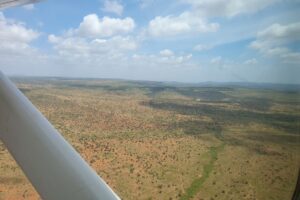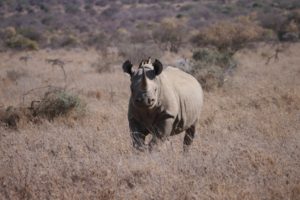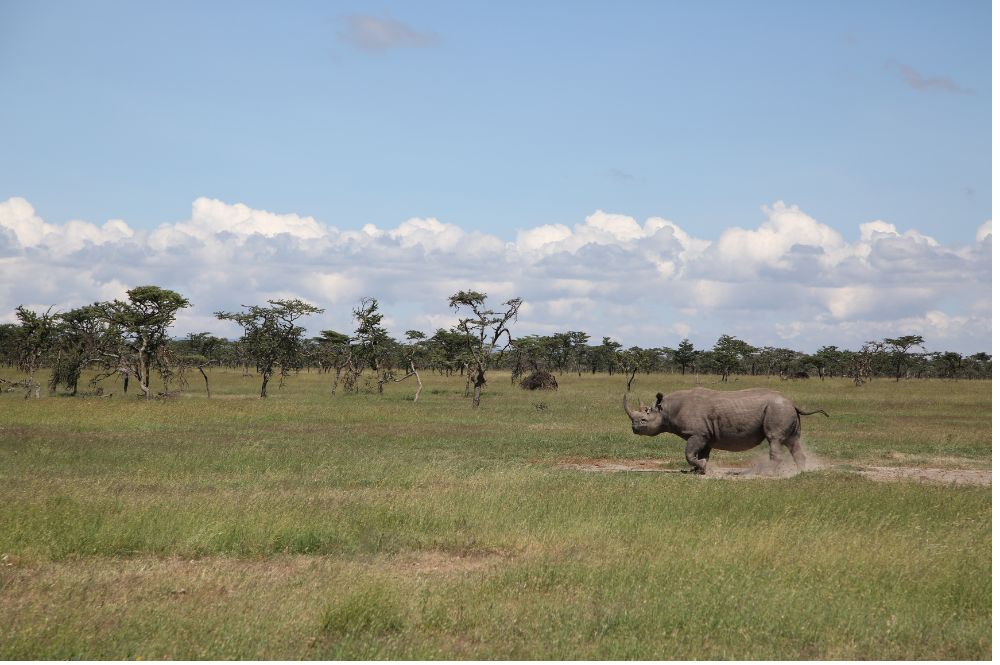We all need a home. A safe space to settle into. A place to develop and grow our life plans. And, at some point, we outgrow the home we’ve known. No amount of rearranging stops the regular bumping of elbows or piles folding into one another. Everything’s overcrowded, and it’s time to move on. Rhinos may not be the Spring-cleaning type, but they do need their space. Without it, they can’t thrive. Too many animals in one place causes problems and slows growth. Yet as a Critically Endangered species, increasing their numbers is crucial. Therefore, finding enough large, diverse landscapes for them to call home is essential.
As the country with the third-largest black rhino population in the world, you may think Kenya has more than enough room for this species to grow. Partly, this is true: there are areas suitable for black rhinos across the country that don’t yet have any. Yet making these landscapes “rhino ready” takes significant planning, expertise, capacity, and long-term investment.
As of 2024, there were 1,059 black rhinos in Kenya, almost double the population in 2005 (540), and halfway towards its 2,000 goal. To achieve this goal (as written in the Kenya Wildlife Service’s black rhino strategy), teams are working across the country to prepare and eventually expand black rhino habitats.
Determining such a habitat starts with the essentials: is there adequate food and water to sustain black rhinos year-round? Security is just as important. Safe boundaries need to be carefully set, ensuring people and other wildlife can pass through whilst rhinos remain within the protected area. Beyond the space needed, people are at the heart of expanding and securing rhino habitats. From the community initiatives that ensure everyone benefits from rhinos and can live in harmony with local wildlife, to the new rangers needed to monitor and safeguard these iconic animals. All of this requires patience alongside action: it takes years of planning, preparation, and training before any rhinos can be moved.

Good progress has already been made. In 2024, Loisaba Conservancy welcomed black rhinos back after being locally extinct for 50 years. Encouragingly, this population has already started to grow with the addition of Valentine, a calf born just eight months after the rhinos were moved. More areas are now receiving and preparing to receive rhinos, including Segera Conservancy in Laikipia County and Tsavo West National Park. Each “rhino ready” site is another step closer to easing the pressure on existing rhino sanctuaries and providing the species with the room it needs to flourish.
Planning for the future means more than just protecting rhinos today. It means creating conditions for the next generation of rhinos, and their children’s children, to thrive. Just like us, they need homes and safe spaces where life can unfold. With every action to prepare the next rhino habitat, Kenya is edging closer to its goal: more black rhinos roaming across the places they once vanished.
We’d like to thank all our fundraisers and donors who have supported the Kenya Rhino Range Expansion project so far, including Nelson Travel and the Betty Lawes Foundation. With ongoing support, we can work alongside our partners to progress more “rhino ready” landscapes, bringing this iconic species back to the wild places they belong.








